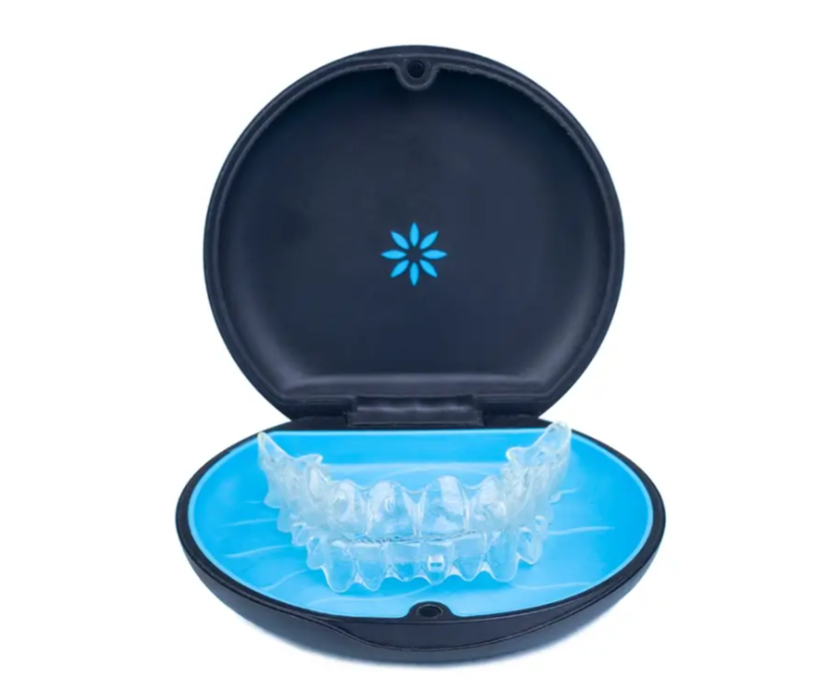The Modern-Way to a Confident Smile: Why Invisalign Braces are Changing Orthodontics
Imagine smiling in every photo, laughing with friends, or speaking in public—completely free from self-consciousness about your teeth. The reality for many people is quite the opposite: crooked teeth, crowding, or bite issues can chip away at confidence and even make oral care a challenge. The good news? Orthodontics has advanced far beyond noticeable wire-and-bracket braces, paving the way for discreet, fast, and highly effective solutions like Invisalign braces.
Immediate first impressions hinge on your smile—a universal expression that transcends words. For years, traditional metal braces were the default answer for those seeking straighter teeth. While undeniably effective, the “brace face” look was a source of worry for teens and adults alike, making social, personal, or professional interactions sometimes uncomfortable. The introduction of Invisalign braces, with their clear, nearly invisible aligners, marks a true turning point—enabling patients of all ages to transform their smiles without the awkwardness or stigma tied to conventional options.
This guide explores the revolution happening in orthodontic care, spelling out why understanding Invisalign braces is crucial for anyone considering an efficient, flexible path to dental alignment. The stakes are higher than mere aesthetics: the right orthodontic treatment impacts long-term oral health, gum care, and self-esteem. So, let's dive into what makes Invisalign braces the topic everyone with an imperfect smile should care about—and why awareness leads to better, faster results.

Invisible Power: How Invisalign Braces Work Their Magic for a Lifetime of Smiles
Invisalign braces are a modern orthodontic solution designed to correct misaligned teeth using a series of clear, custom-fitted aligners. Unlike traditional metal braces, these aligners are nearly invisible and can be taken out for eating, brushing, or special occasions. Each aligner gently shifts the teeth over time, usually with changes every couple of weeks—creating the optimal path for a balanced, radiant smile. The science behind Invisalign braces leverages digital scanning and 3D modeling, which allows for precision planning and predictably excellent results.
But the innovations don’t stop at aesthetics. Invisalign braces directly address many of the pain points associated with traditional orthodontics, such as discomfort from metal wires or brackets, dietary restrictions, and complicated cleaning routines. For teens and adults juggling busy schedules or careers where appearance matters, the discreet profile of Invisalign braces offers freedom and flexibility without compromising on results. Yet, lack of awareness or misinformation about these clear aligners can mean missing out on a transformative, high-tech solution—leaving some to endure outdated treatments or, worse, avoid essential orthodontic care altogether.
Not understanding or exploring the advantages of Invisalign braces can lead to lingering issues: untreated dental misalignments often snowball into jaw pain, difficulty cleaning teeth, and higher long-term dental costs. This makes staying informed more critical than ever. The real magic of Invisalign braces isn’t just what they do for your appearance—it’s the way they fit seamlessly into modern life, providing a path to oral health that’s both effective and unobtrusive.

Why Invisalign Braces Deliver Comfort, Flexibility, and Results that Change Lives
Orthodontic care has evolved to become far more than just an aesthetic fix; it’s about enhancing quality of life through advanced, patient-focused solutions. The team at Willow Orthodontics exemplifies this shift by combining technical expertise with compassionate, individualized care. Drawing from years of specialist experience and leveraging the latest digital office technology, their approach to Invisalign braces puts patient comfort and long-term results front and center.
The real-world benefits of Invisalign braces are as practical as they are profound. Patients enjoy everyday freedoms—removable aligners mean favorite foods are still on the menu and oral hygiene routines remain simple and effective. For those hesitant about the “brace face,” Invisalign’s discreet design erases social worries, encouraging more authentic smiles even before treatment is done. These clear aligners aren’t just about outward transformation; by guiding teeth gently into place, they also reduce risks of future dental complications and promote overall oral wellness. That power to change lives—efficiently and comfortably—sets Invisalign braces apart as a leading-edge answer for families and professionals alike.
From Metal Brackets to Invisible Aligners: The Evolution of Orthodontic Care
The history of orthodontics is a testament to the leaps in innovation in dental medicine. Where braces once meant a visible and sometimes uncomfortable array of wires and brackets, today’s digital technology has made personalized, invisible options like Invisalign braces a reality. This evolution is especially critical for parents seeking early interventions or adults looking to quickly correct alignment without drawing attention. Moving from traditional solutions to advanced, precise digital planning, patients now access a level of customization and predictable outcomes that simply wasn't possible before.

This shift isn’t just about looks. As clear aligners have become more available, patients have seen reduced treatment times and improved comfort, allowing them to focus on what matters most: enjoying life and watching their smiles transform. Understanding the path orthodontics has taken sheds light on why Invisalign braces have become a top choice for modern families, signaling a new era of accessible, high-quality dental care.
Getting the Most out of Your Invisalign Journey: Tips for Success
Success with Invisalign braces hinges on both the technology and the patient’s commitment. While the aligners are easy to use and fit right into daily life, following a few best practices helps maximize results. Wearing the aligners consistently—ideally 20 to 22 hours per day—ensures progress stays on track. Patients should remove them only for meals, drinks (besides water), and brushing routines. Introducing aligners into your daily habits makes the transition smooth and virtually pain-free.
Regular check-ins with a knowledgeable orthodontic team, like those at Willow Orthodontics in Winnipeg, offer ongoing guidance and minor adjustments if required. Digital office technology means appointments are efficient, comfortable, and tailored specifically to your needs. By combining personal commitment with expert oversight, patients make the most of what Invisalign braces offer—fast, comfortable, and lasting transformation.

The Emotional Impact: Why a Confident Smile Matters at Every Age
A great smile isn’t just about appearances; it’s about self-esteem, the courage to pursue opportunities, and the comfort to engage fully in social or professional settings. For adults who missed out on orthodontic care as children, or for teens anxious about looking different, Invisalign braces open doors to a world where transformation is both private and empowering. Testimonies from patients who completed their Invisalign journey highlight not just straighter teeth, but greater confidence in every aspect of their lives.
Orthodontics, after all, is about more than moving teeth—it’s about transforming outlooks and unlocking potential. When treatment is made stress-free, positive, and accessible, patients of any age discover that it’s never too late for a new beginning. The ripple effect of this newfound self-assurance is felt in everything from job interviews to family photos and friendships forged on genuine smiles.
Willow Orthodontics’ Patient-First Philosophy and Commitment to Precision
At the heart of Willow Orthodontics is a clear mission: every treatment plan is tailored to the unique needs of each patient, with comfort, long-term health, and positive experience as guiding principles. Willow Orthodontics believes in putting patients first means taking the time to understand their unique lifestyles—whether they play a musical instrument, participate in sports, or travel frequently. This personalized approach allows the team to design treatment plans that truly fit each patient’s needs. Years of specialist expertise mean each case gets the full benefit of advanced orthodontic knowledge, but it’s the human element that sets this team apart. Patients are welcomed by a friendly, supportive staff who take time to explain the orthodontic journey, easing worries and building confidence from day one.
Willow Orthodontics’ commitment to using cutting-edge digital tools ensures that Invisalign braces treatments are not only precise, but also efficient and comfortable. Digital scanning technology removes the need for old-fashioned trays or molds, making the process seamless from consultation to final results. Dr. Will Wieler’s philosophy embraces the idea that great orthodontics is about much more than straight teeth—it’s about creating lasting, sustainable oral health and wellbeing through personalized, compassionate care. This approach positions their practice as a leader and trusted voice in modern orthodontic solutions.
Serving families across Winnipeg and surrounding regions, Willow Orthodontics becomes an anchor for comprehensive dental transformation, blending technology and personal touch into every Invisalign journey. This marriage of innovation and empathy is what keeps patients returning—and what makes their contribution to community oral health so significant.
Real Results with Invisalign Braces: A Patient’s Story
The difference made by Invisalign braces isn’t just measured in straight teeth—it’s seen and felt in everyday life. Patients regularly express gratitude for their orthodontic journeys, citing compassionate care and dramatic results as key components of their experiences. One such patient shares how the process brought comfort and new confidence:
Wonderful, friendly and supportive. Dr. Wieler and his staff are knowledgeable and explained the journey of orthodontic care providing ease of previous anxiety and jitters. The new office location is welcoming and offers natural light and additional seating. Highly recommended to book your consultation with Willow Orthodontics today!
When patients receive thorough explanations and gentle, expert care, overcoming anxiety or uncertainty becomes part of the path toward transformation. Success stories like this show how the right orthodontic treatment—delivered by professionals who truly care—can turn former hesitations into real results and genuine smiles. Anyone considering Invisalign braces can look to such experiences as proof that investing in one’s smile delivers far-reaching benefits that echo into all corners of life.
Rethinking Orthodontics: Why Invisalign Braces Are Fast Becoming the Modern Standard
Smile transformations are no longer reserved for the brave few willing to endure traditional metal hardware. Today, Invisalign braces represent the powerful fusion of high-tech precision and everyday ease, making them an appealing option for teens, adults, and families alike. By delivering comfort, discreteness, and highly customized results, Invisalign braces are rapidly shaping the expectations of modern orthodontic care.
Through expertise and digital innovation, practices like Willow Orthodontics play a pivotal role in guiding patients toward a faster, more comfortable journey to dental alignment. As this approach continues to grow in popularity, Invisalign braces stand out as more than just an alternative—they are becoming the standard for those who value results, comfort, and confidence. The future of orthodontics is here—and it’s invisible.
Contact the Experts at Willow Orthodontics
If you’d like to learn more about how Invisalign braces could benefit your dental care, contact the team at Willow Orthodontics.
📍 Address: 1919 Henderson Hwy Unit 1, Winnipeg, MB R2G 1P1, Canada
📞 Phone: 1-204-982-8000
🌐 Website: http://www.willowortho.com/
Willow Orthodontics Availability
📅 Monday: 8:00 AM – 5:00 PM
📅 Tuesday: 8:00 AM – 5:00 PM
📅 Wednesday: 8:00 AM – 5:00 PM
📅 Thursday: 8:00 AM – 5:00 PM
📅 Friday: 8:00 AM – 5:00 PM
📅 Saturday: ❌ Closed
📅 Sunday: ❌ Closed

 Add Row
Add Row  Add
Add 




Write A Comment